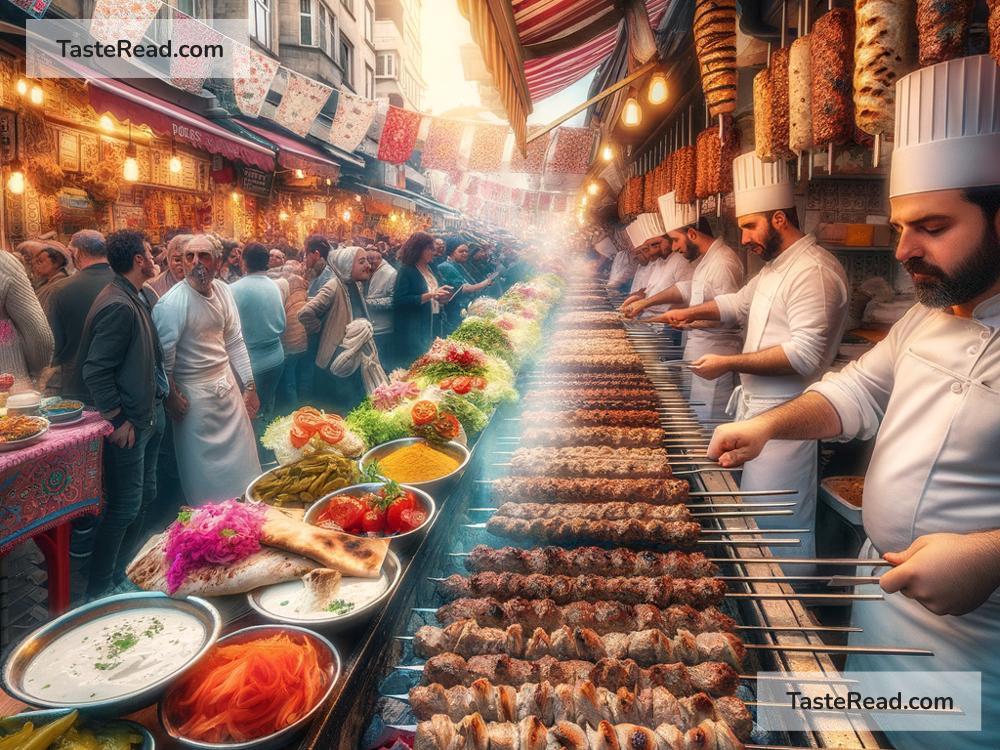The Influence of the Turkish Kebab
When you think of Turkish food, the kebab is probably the first thing that comes to mind. This delicious and flavorful dish has become famous all over the world. From Europe to the Middle East, and even across the Americas, the Turkish kebab has left its mark on global cuisine. But how did the kebab become so popular, and why is it loved by so many people? Let’s explore the history, variations, and the cultural impact of Turkish kebabs in simple words.
A Taste of Turkey’s History
The word “kebab” comes from the Arabic word “kabāb,” which means roasted meat. While the exact origin of the kebab is unclear, many historians believe it originates from soldiers in Turkey and surrounding areas. Centuries ago, warriors would skewer meat on swords and cook it over open flames during their journeys. This practical way of preparing meat evolved into the slow, flavorful cooking methods we see today.
As the Ottoman Empire expanded during the 14th to 20th centuries, the kebab traveled along with it, influencing cuisines in places like Greece, the Balkans, and the Middle East. Turkish chefs perfected the art of marinating meat with spices and herbs, transforming simple meats into dishes full of flavor. These recipes were eventually passed down for generations and adapted by different cultures.
Types of Turkish Kebabs
One of the most interesting things about Turkish kebabs is their variety. There isn’t just one kind of kebab—there are many, each with different cooking styles and flavors. Some are grilled over charcoal, others cooked in ovens, and some are even served raw (like çiğ köfte). Here are some of the most popular types:
-
Şiş Kebab: This is what most people recognize as a classic kebab. Pieces of marinated meat (often lamb or chicken) are skewered and grilled over an open flame. The smoky, juicy flavor makes it the perfect barbecue dish.
-
Adana Kebab: Named after the city of Adana in southern Turkey, this spicy minced meat kebab is flavored with chili peppers and served on flatbread. It’s perfect for those who love bold flavors!
-
Doner Kebab: Doner is perhaps the most famous Turkish kebab outside Turkey. Thin slices of meat (often chicken, beef, or lamb) are cooked on a rotating spit and served in wraps, sandwiches, or on plates with rice. It’s widely popular as street food.
-
İskender Kebab: This kebab is an elevated version of doner kebab. Served on pita bread, it is topped with tomato sauce, melted butter, and yogurt. It’s a favorite for those looking for a rich, comforting meal.
-
Köfte Kebab: These are meatballs made with ground lamb or beef mixed with spices. They are grilled or pan-fried and can be served as part of a meal or in a sandwich.
A Worldwide Favorite
While kebabs are deeply rooted in Turkish culture, their influence has spread far and wide. Turkish immigrants played a major role in popularizing kebabs in different countries. In places like Germany, the doner kebab has become a beloved fast food. Berlin alone is said to have over 2,000 doner kebab shops!
In the UK, kebabs are a popular late-night snack, especially after a night out. Many people enjoy grabbing a doner kebab before heading home. In Australia, kebabs are often enjoyed at beach towns alongside servings of fresh vegetables and sauces.
This global love for Turkish kebabs showcases how food can connect people across cultures. Each country has adapted the kebab to suit its own tastes. In Mexico, you’ll find tacos al pastor, which are influenced by the Turkish doner kebab—layered meat cooked on a spit but served with pineapple and corn tortillas.
Beyond Just Food
Turkish kebabs have not only influenced world cuisine but also Turkish hospitality. They symbolize gathering around food, sharing meals with friends and family, and enjoying life’s simple pleasures. In Turkey, kebabs are often eaten in restaurants with large groups of people, and meals usually include rounds of meze (small starters), salads, and fresh bread on the side. Eating kebabs is more than just a meal; it is a centerpiece of culture and tradition.
Today, Turkish restaurants are thriving around the globe, introducing millions of people to the art of kebab-making. Chefs specialize in creating dishes that honor Turkish heritage while blending modern tastes. Whether you’re enjoying a street-side doner kebab or a fine-dining version of Iskender kebab, you’re experiencing a history and tradition that is centuries old.
A Lasting Legacy
So why do people love Turkish kebabs so much? The answer lies in their simplicity and flavor. Kebabs take humble ingredients like meat, spices, and vegetables, and turn them into something extraordinary. They are customizable, perfect for sharing, and always satisfying. Whether it’s on a skewer, wrapped in a pita, or served with rice and yogurt, kebabs continue to influence food culture worldwide.
The Turkish kebab is more than just great food—it’s a symbol of connection, history, and creativity. Its journey from Turkey to the world has made it one of the most iconic dishes ever created. So, the next time you bite into a kebab, take a moment to appreciate the rich tradition behind it. It’s a small taste of Turkey’s big influence in global cuisine!


